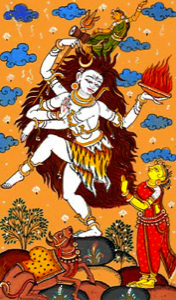
The origin of mudra
The origin of the mudras is a mystery. Mudras are not only found in Asia, but they are also used throughout the entire world. In their rituals, our European ancestors certainly were familiar with specific gestures, which they used to underline and seal what they thought and wanted to say. During the Christianization of the Nordic peoples, many gestures were initially prohibited, such as invoking the gods with raised arms. Later, these gestures were partially integrated into the Christian teachings. If we observe the various gestures made by a priest saying the Mass, we can perhaps sense how these ancient peoples expressed themselves. But our everyday life is also characterized by gestures, the origins of which hardly anyone knows today: crossing our fingers for someone, clapping our hands as applause, the handshake, holding hands, or "giving someone the finger" to display our low opinion of them.
In India, mudras are an established component of all religious activities. The various mudras and hastas (arm poses) are significant in the depiction of Hindu gods. In addition to body postures and attributes, they also represent the distinguishing characteristics of various deities. The person at prayer sees a special power, capability, and strength of character in these mystical hand poses.
The mudras are just as familiar in Indian dance, where the hands, eyes, and body movements act or dance the entire drama without words.
Mudras are also practiced in Tantric rituals. They play a large role in Buddhism, where six mudras are very familiar in the pictorial depictions of Gautama Buddha. These are very closely related to his teachings and his life.
Hatha Yoga also expresses the many states of mind, such as mourning, joy, anger, and serenity, through gestures and body positions. They realize that the reverse also applies—certain gestures can positively influence the psyche.

